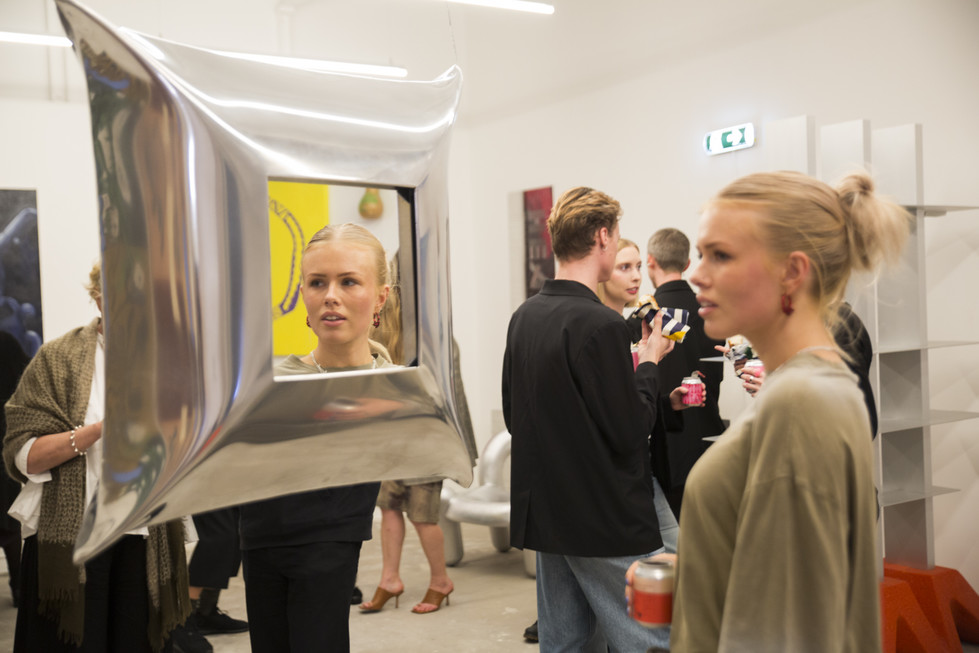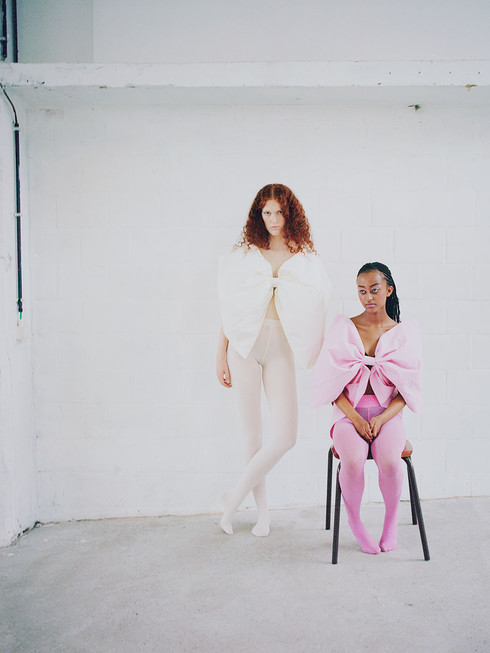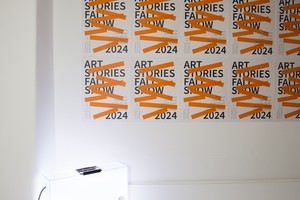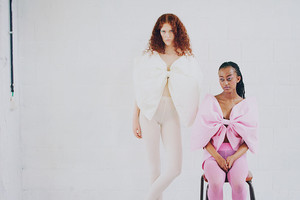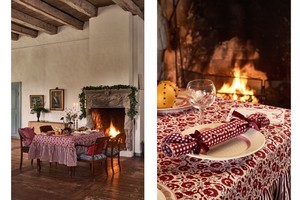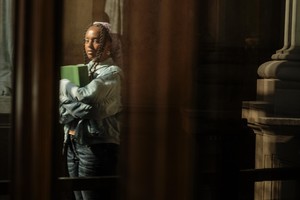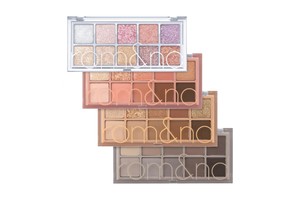We joined Sofia Hermens Fernandez, a rising talent in the fashion world with roots in Germany, Spain, and the Netherlands. She recently graduated from the MA Fashion program at the Royal Academy of Fine Arts in Antwerp. Pieces of her final collection are featured in the photo’s. Sofia’s work delves into the imagery and narratives surrounding Western girlhood. She takes a unique approach by exploring how handcraft can challenge and reimagine these narratives. Through her designs, Sofia invites us to consider girlhood not just as a phase, but as a creative attitude open to diverse identities. We’re excited to learn more about her perspective and the inspiration behind her work.
Can you tell us about your background and how your Spanish and Dutch heritage has influenced your approach to fashion and design?
I grew up in Hamburg, Germany, with a Spanish mum and a Dutch dad. Whenever my sister and I were off from school, we would visit our family in Spain and the Netherlands. My family, spread all over Europe and even into the US, considers different things beautiful, and there are certain colours and atmospheres I associate with each country. I suppose that being exposed to different languages, mindsets, and cultures has made me very open-minded; it has encouraged me to look for inspiration in places that feel close to me. I always feel at home everywhere and nowhere at the same time, if that makes sense. I realised that the way I see the world creatively is my own unique perspective. Of course, this is true for all creative designers, but you need to make that discovery, I believe. Staying true to who you are and your background always results in the most honest creative work.
What inspired you to focus on the semiotics and construction of images of Western girlhood in your work?
I have always been fascinated by the concept of girlhood and the images associated with it. Elements like ribbons, bows, and the colour pink are tied to Western girlhood. I have always liked these things, but for a long time, I felt like I shouldn't enjoy and use them in my work, as they are often seen as frivolous and weak. Fashion and handcraft are powerful tools for constructing images of girlhood and different girlhood identities. They can also be powerful tools to subvert marginalised visions of femininity, such as girlhood, into a feminist context. This is something I finally wanted to explore in depth for my MA collection at the Royal Academy of Fine Arts in Antwerp.
How has your experience at the Royal Academy of Fine Arts in Antwerp shaped your creative vision and approach to fashion?
The fashion department at the Academy is a very demanding programme. The teachers invest a lot of time and energy into getting to know you as a creative person and pushing you. During my studies, I struggled with insecurities and doubts, but I learned to find my creative vision and, importantly, to express and explain it clearly. I met many talented and interesting people there, and although it was challenging, it was also a great place to experiment, make mistakes, and grow as both a person and a fashion designer.
You mention using handcraft to subvert traditional images of girlhood. Could you elaborate on how you incorporate handcraft techniques into your designs?
Girls were traditionally taught handcraft techniques like embroidery, knitting, and sewing as part of becoming a woman and performing an ideal of femininity. Not everyone enjoys handcrafts, and they can even carry oppressive associations. Handcraft techniques have long been devalued as mere “women's work” by patriarchal society and have been dismissed by feminists as well. However, there is also great beauty, creativity, and power in the handcraft techniques our grandmothers and mothers learned during their girlhoods. I find myself in a position where I can embrace these techniques by choice and admiration, which changes the whole context and gives them the potential to be tools of subversion.
How do you hope your work will influence the fashion industry's understanding and portrayal of girlhood?
I want the fashion industry to understand that girlhood, as a state of mind, has always been relevant and is here to stay, with all kinds of gender identities able to have fun with it. I hope my work inspires a greater appreciation of handcraft, and helps people see the joy of “girlie” elements in fashion. I want to respect girlhood as a creative attitude that offers a meaningful means of self-expression.
How do you balance the research aspect of your work with the design process? Are there specific academic or theoretical frameworks that guide your projects?
I read a lot of feminist theories and literature focused on using handcraft and textiles as tools for subversion. A good example is Rozsika Parker's The Subversive Stitch. I’m fascinated by how fashion and the needle have been used not only as tools to oppress women but also as means for self-expression and rebellion.
As a young designer, what impact do you hope to make on the fashion industry, particularly in terms of inclusivity and representation?
I hope the perception of what people in top creative positions look like will change and become more diverse. The fashion industry is not very open, and although it has always been perceived as feminine, the decision-makers are mostly white men. I hope to be part of a generation of designers where there is space, encouragement, and support for different visions and forms of success. We need to move away from large conglomerates owning multiple brands and all the power, and return to appreciating makers and craft.
Who or what are your biggest influences in fashion, and how have they shaped your perspective on design?
I continuously discover new artists and designers who inspire me; it’s a never-ending exploration. I am interested in the work of artists like Louise Bourgeois and historical designers like Emilie Flöge and Sonia Delaunay-Terk. In terms of contemporary fashion, I currently love the vision of Cecilie Bahnsen, Molly Goddard, and Simone Rocha. I admire creative women who use textiles to convey a powerful and personal message, and who, as women, have a unique vision of how to dress women.
Could you describe any specific techniques or materials that are central to your designs?
I frequently use fabric manipulation techniques like appliqué, embroidery, and felting. I prefer to work with natural materials such as wool, cotton, and silk. I enjoy manipulating surfaces so the textures can tell stories.
What do you hope people take away from your designs and the messages you are conveying through your work?
When people see my work, I hope they feel joy. Overall, I hope society can revalue the act of making clothes. We should all consume less fashion but cherish it more. I envision a world where everyone is more involved with the clothes they consume.
Which is your favourite piece that you have ever made?
This feels like choosing a favourite child! In a way, my favourite piece is always the last one I created, as it communicates my most recent state of mind and is the most relevant at the moment.



